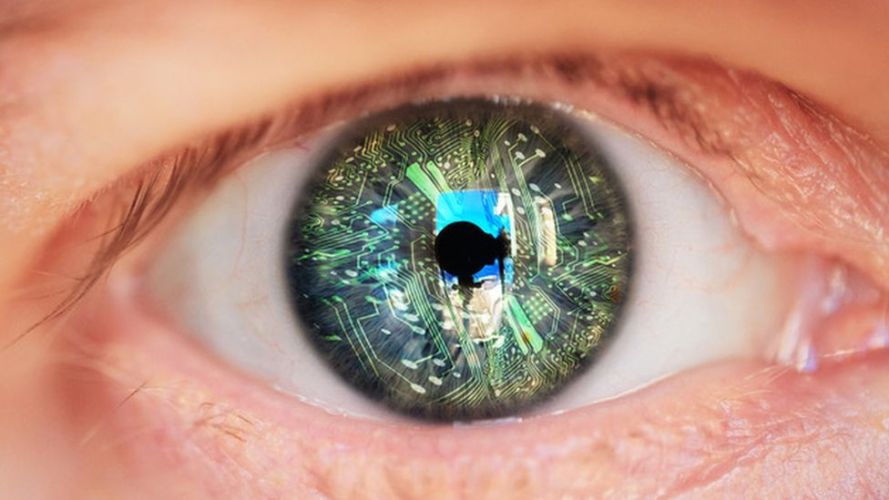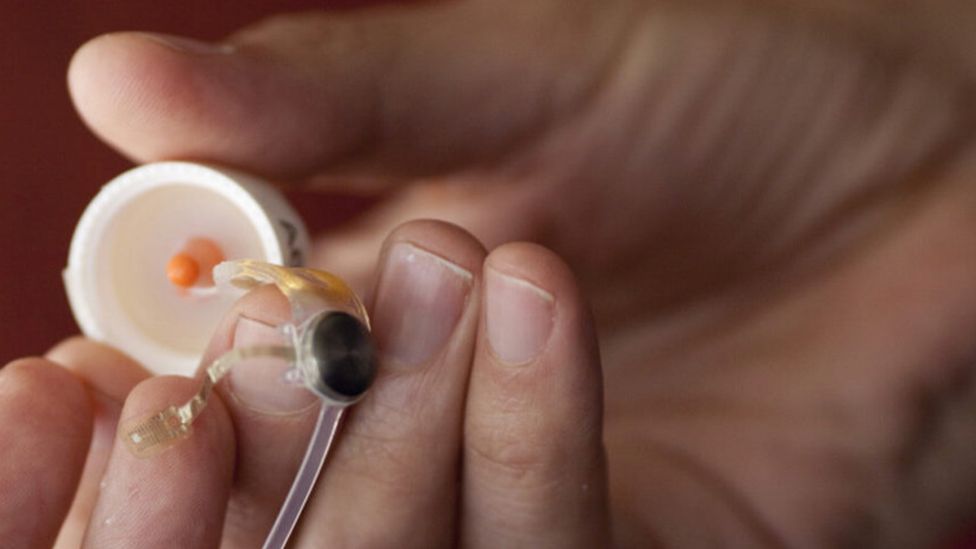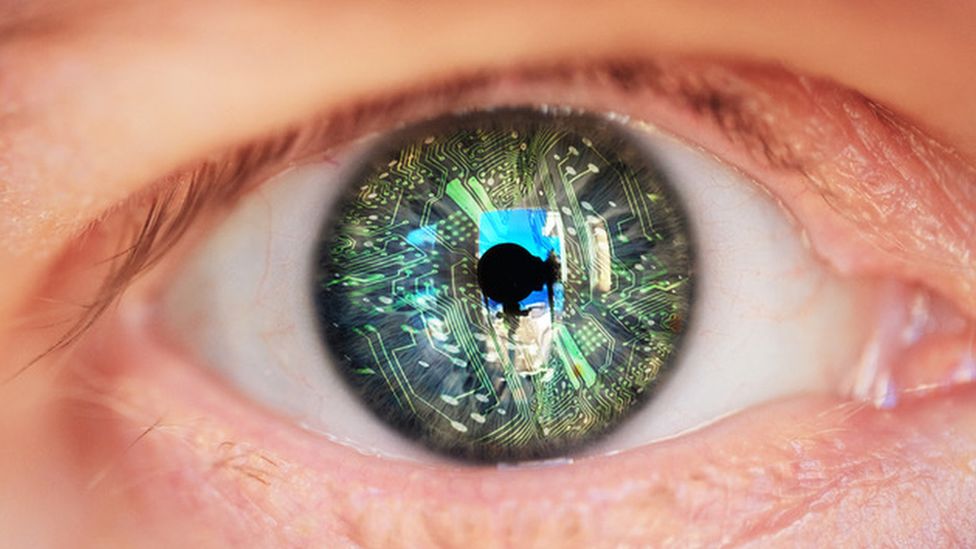
Bionic eyes: Obsolete tech leaves patients in the dark

Hundreds of people who had retinal implants to improve their sight face an uncertain future as the technology they rely on is now obsolete.
Second Sight stopped making its Argus II bionic eyes several years ago to focus on a brain implant instead.
According to IEEE Spectrum, which broke the story, it is now hoping to merge with a biopharmaceutical firm which does not make eye implants.
Second Sight was contacted by the BBC but has not yet responded.
Enhancing lives
Adam Mendelsohn, chief executive of Nano Precision Medical, with which Second Sight is planning to merge, told the BBC it would consider the issues raised by IEEE once the merger, scheduled for mid-2022 – was completed.
“I do intend to make this one of our priorities if and when I assume my leadership position in the combined company,” Mr Mendelsohn said.
According to Second Sight’s website, its Argus II offers life-changing benefits for those with sight impairment, including “enjoying mobility and independence”.
“Our mission is to develop neuro-stimulation technology to enhance the lives of blind individuals, while supporting our current users,” it says.

But IEEE Spectrum reports that Second Sight actually discontinued its retinal implants – which effectively take the place of photoreceptors in the eye to create a form of artificial vision – in 2019.
It says the firm nearly went out of business in 2020 and is now concentrating on a brain device – the Orion – which also provides artificial vision, while providing only limited support to the 350 or so who have the implants.
Costly technology
Surgery to implant the device typically takes a few hours and is followed by post-op training to help users interpret the signals from their devices.
The website also promises updates. “As technology improves, so will your Argus II implant – without the need for additional surgery. Enjoy programming flexibility and the capacity for future hardware and software upgrades.”
The system consists of the implant, special glasses with a built-in camera and a video processing unit (VPU) that is attached around the wearer’s waist.
The camera on the glasses sends video to the VPU, which converts the images to patterns of black and white pixels and sends them back to a responder in the glasses, which in turn beams them wirelessly to an antenna on the outside of the eye.
An implanted electrode array behind the retina receives the stimulation patterns from the user’s glasses and stimulates the eye by creating flashes of light that correspond to the video feed and which are sent by the implant to the optic nerve to create a kind of artificial vision.
It’s clever and innovative tech, which has taken decades to create and was not cheap – estimated at around $150,000 (£110,000) excluding surgery and post-surgery training.
In the dark

But patients contacted by IEEE Spectrum voiced concern.
One, Ross Doerr, said Second Sight failed to contact any of its patients after its financial difficulties in 2020.
“Those of us with this implant are figuratively and literally in the dark,” he said.
Another user, Jeroen Perk, had problems when his VPU system broke in November 2020. “I had no vision, no Argus, and no support from Second Sight,” he told the publication.
He considered having the device surgically removed but decided to ask other patients and doctors familiar with the system for help, and luckily found spare parts.
Second Sight told the magazine that during its financial difficulties it had had to reduce its workforce and “was unable to continue the previous level of support and communication for Argus II users”.
It has since contacted users and doctors, saying it will do its best to “provide virtual support”. But no repairs or replacements are possible for the implants.
Tech vulnerability
Elizabeth M Renieris, professor of technology ethics at the University of Notre Dame, in the US, described the development as a cautionary tale.
She told the BBC: “This is a prime example of our increasing vulnerability in the face of high-tech, smart and connected devices which are proliferating in the healthcare and biomedical sectors.
“These are not like off-the-shelf products or services that we can actually own or control. Instead we are dependent on software upgrades, proprietary methods and parts, and the commercial drivers and success or failure of for-profit ventures.”
Ethical considerations around such technology should in future include “autonomy, dignity, and accountability”, she added.



